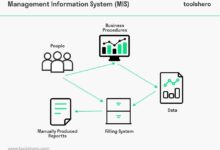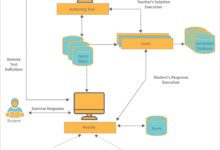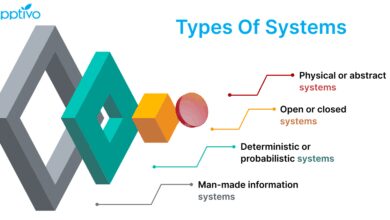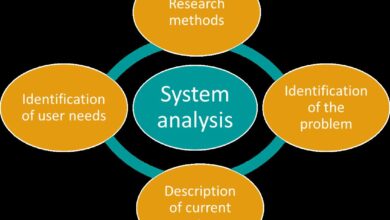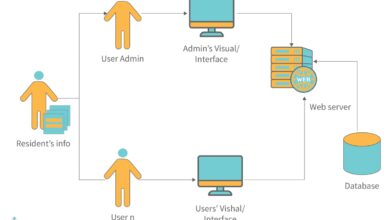System Haptics: 7 Revolutionary Insights That Will Transform Your Tech Experience
Ever wondered how your phone vibrates just right when you type or how game controllers mimic real-world sensations? Welcome to the world of system haptics—a hidden layer of digital interaction that’s quietly reshaping how we engage with technology.
What Are System Haptics?

At its core, system haptics refers to the technology that delivers tactile feedback through vibrations, motions, or forces in electronic devices. Unlike simple buzzes from early mobile phones, modern system haptics are precise, programmable, and context-aware, creating a bridge between digital interfaces and human touch.
The Science Behind Touch Feedback
Haptics stems from the Greek word ‘haptikos,’ meaning ‘able to touch or grasp.’ In engineering and computer science, it involves the use of actuators—tiny motors or piezoelectric elements—that generate controlled physical sensations. These sensations are synchronized with visual and auditory cues to create a cohesive user experience.
- Actuators convert electrical signals into mechanical motion.
- Feedback is tailored based on user input or system response.
- Advanced algorithms determine the intensity, duration, and pattern of vibrations.
For instance, Apple’s Taptic Engine uses linear resonant actuators (LRAs) to deliver crisp, directional taps instead of the jarring buzz of older eccentric rotating mass (ERM) motors. This precision allows for nuanced feedback, such as simulating a button click on a touchscreen.
“Haptics is not just about vibration—it’s about communicating through touch,” says Dr. Karon MacLean, a pioneer in human-computer interaction at the University of British Columbia.
Evolution from Simple Buzz to Smart Feedback
The journey of system haptics began in the 1990s with basic rumble features in gaming controllers like the Nintendo Rumble Pak. These early systems used crude motors to simulate explosions or collisions. Fast forward to today, and system haptics have evolved into intelligent feedback systems embedded in smartphones, wearables, automotive dashboards, and even VR headsets.
- 1990s: Rumble packs introduced tactile feedback in gaming.
- 2000s: Mobile phones adopted basic vibration for calls and alerts.
- 2010s–Present: Smart haptics enable contextual, dynamic responses.
Modern implementations, such as those in the iPhone and Samsung Galaxy series, use sensor fusion—combining data from accelerometers, gyroscopes, and touch inputs—to adjust haptic responses in real time. This allows for adaptive feedback that feels natural and intuitive.
How System Haptics Work: The Technology Breakdown
Understanding how system haptics function requires diving into the hardware, software, and sensory psychology that make them effective. It’s not just about making a device vibrate—it’s about crafting a meaningful tactile language.
Key Components of Haptic Systems
A typical system haptics setup includes several core components working in harmony:
- Actuators: The physical engines that produce motion. Common types include ERMs, LRAs, and piezoelectric actuators.
- Drivers: Integrated circuits that control the power and timing of actuator movements.
- Sensors: Detect user input (e.g., touch pressure, swipe speed) to trigger appropriate haptic responses.
- Software Frameworks: APIs like Apple’s Haptic Engine API or Android’s Vibration API allow developers to design custom feedback patterns.
For example, in the Apple Watch, the Taptic Engine works with the Digital Crown and touchscreen sensors to deliver distinct taps for notifications, navigation cues, and workout milestones. Each sensation is designed to be recognizable without being intrusive.
Types of Haptic Feedback
Not all haptics are created equal. Different applications require different kinds of tactile responses:
- Tap or Pulse: Short, sharp vibrations used for notifications or button presses (e.g., iPhone keyboard feedback).
- Rumble or Sustained Vibration: Longer, oscillating patterns used in gaming or alerts.
- Texture Simulation: Rapid micro-vibrations that mimic surfaces like sandpaper or glass (used in some experimental touchscreens).
- Force Feedback: Resistance or push-back, often found in advanced controllers or robotic interfaces.
One notable advancement is ultrasonic haptics, where high-frequency sound waves create air pressure changes on the skin, allowing users to ‘feel’ virtual buttons without physical contact. This technology is being explored by companies like Ultrahaptics for use in automotive and medical interfaces.
“The future of haptics lies in making the invisible tangible,” says Tom Carter, CTO of Ultrahaptics.
Applications of System Haptics Across Industries
System haptics are no longer confined to smartphones. They’re revolutionizing industries by enhancing safety, accessibility, and immersion. From healthcare to transportation, tactile feedback is becoming a critical component of user-centered design.
Smartphones and Wearables
In mobile devices, system haptics enhance usability and reduce cognitive load. For example:
- iOS uses haptics to simulate physical buttons on the iPhone’s 3D Touch and Haptic Touch features.
- Android devices leverage haptics for keyboard feedback, navigation gestures, and accessibility modes.
- Smartwatches use directional taps to guide users during navigation (e.g., left tap = turn left).
According to a Gartner report, over 80% of premium smartphones now include advanced haptic engines, with users reporting higher satisfaction in device responsiveness and interaction quality.
Gaming and Virtual Reality
In gaming, system haptics deepen immersion by translating in-game actions into physical sensations. The PlayStation 5’s DualSense controller is a landmark example, featuring adaptive triggers and dynamic haptic feedback that simulate tension, texture, and impact.
- Adaptive triggers can mimic the resistance of drawing a bowstring or pressing a brake pedal.
- Haptic motors respond to terrain changes—feeling gravel vs. grass underfoot in a VR environment.
- Controllers can convey emotional cues, such as a character’s heartbeat or environmental vibrations.
Valve’s Steam Controller and Meta’s Quest Touch controllers also use system haptics to improve spatial awareness and interaction fidelity in VR. A study published in the ACM CHI Conference on Human Factors in Computing Systems found that haptic feedback in VR reduced user error rates by up to 40%.
Automotive and Driver Assistance
Modern vehicles are integrating system haptics into steering wheels, seats, and pedals to improve driver safety and reduce distraction. Examples include:
- Haptic steering wheels that vibrate to alert drivers of lane departures or collision risks.
- Seat-based alerts that pulse on the left or right side to indicate turn directions.
- Pedal feedback that resists acceleration when adaptive cruise control detects a vehicle ahead.
BMW and Mercedes-Benz have implemented haptic feedback in their driver assistance systems, with research from the National Highway Traffic Safety Administration (NHTSA) showing a 25% reduction in missed alerts when haptics are used alongside visual and auditory cues.
System Haptics in Accessibility and Inclusive Design
One of the most impactful uses of system haptics is in making technology accessible to people with visual or hearing impairments. By providing tactile alternatives to visual or auditory signals, haptics empower users to interact independently and confidently.
Assisting the Visually Impaired
For blind or low-vision users, system haptics serve as a navigation and communication tool:
- Smart canes with haptic feedback detect obstacles and vibrate to indicate distance.
- Wearable devices like the Haptic Wave bracelet translate visual information into touch patterns.
- Screen readers on smartphones use distinct vibration patterns to signal different UI elements (e.g., links, buttons, headings).
Apple’s VoiceOver feature, combined with system haptics, allows blind users to navigate iOS with precision. A tap might mean a button, while a double-tap activates it—mirroring the logic of sighted interaction.
Supporting Deaf and Hard-of-Hearing Users
Haptics also play a crucial role in alerting deaf users to important events:
- Smartphones can vibrate in specific patterns for calls, messages, or alarms.
- Wearables like the Apple Watch can deliver haptic notifications for doorbells, baby monitors, or fire alarms via connected apps.
- Some hearing aids now integrate with haptic devices to provide physical cues for sound events.
The Hearing Loss Association of America highlights that haptic alerts improve response times and reduce anxiety for users who rely on non-auditory cues.
“Haptics give me a sense of presence in a world that often forgets to include us,” says Sarah Johnson, a deaf tech advocate.
The Role of AI and Machine Learning in System Haptics
As artificial intelligence advances, system haptics are becoming smarter and more adaptive. AI enables devices to learn user preferences, predict interaction needs, and deliver personalized tactile feedback.
Personalized Haptic Profiles
Machine learning models can analyze how users respond to different haptic patterns and adjust them accordingly:
- A user who prefers subtle feedback might receive softer taps, while another might want stronger pulses.
- AI can detect grip strength or hand tremors and modify haptic intensity for accessibility.
- Context-aware systems adjust feedback based on environment—quieter haptics in meetings, stronger ones in noisy areas.
Google’s AI research team has experimented with adaptive haptics in Pixel phones, using on-device learning to optimize vibration patterns for typing accuracy and comfort.
Predictive Haptics in User Interfaces
Future systems may use AI to anticipate user actions and provide preemptive feedback:
- A smartphone might vibrate slightly before a swipe is completed, confirming the gesture is recognized.
- In AR glasses, haptics could guide hand movements before a virtual button is pressed.
- Smart home devices might use haptic cues to confirm commands before execution.
This predictive layer reduces uncertainty and enhances the fluidity of interaction. Researchers at MIT’s Media Lab are exploring “haptic anticipation” as a way to make digital interfaces feel more intuitive and responsive.
Challenges and Limitations of System Haptics
Despite their potential, system haptics face several technical, ergonomic, and perceptual challenges that limit widespread adoption and effectiveness.
Battery Consumption and Power Efficiency
Haptic actuators, especially high-fidelity ones, can drain battery life quickly. Continuous use in gaming or navigation apps may reduce device uptime by 10–15%. Engineers are working on low-power haptic drivers and energy-efficient waveforms to mitigate this.
- Piezoelectric actuators consume less power than LRAs but are more expensive.
- Smart haptic scheduling can limit feedback to essential interactions only.
- Future materials like electroactive polymers promise high efficiency and flexibility.
According to a IEEE paper on haptic energy optimization, adaptive haptic intensity based on user activity can reduce power usage by up to 30%.
User Fatigue and Sensory Overload
Too much haptic feedback can lead to tactile fatigue or annoyance. Users may disable haptics entirely if they feel overwhelmed.
- Overuse of vibrations in notifications can cause desensitization.
- Poorly timed or inconsistent feedback breaks immersion.
- Some users find haptics distracting during focused tasks.
Designers must follow the principle of “haptic minimalism”—using feedback only when it adds value. Apple’s design philosophy emphasizes subtlety and intentionality, avoiding unnecessary vibrations.
Standardization and Cross-Platform Compatibility
There is currently no universal standard for haptic feedback, leading to inconsistent experiences across devices and apps.
- An app might use strong vibrations on Android but weak ones on iOS.
- Game developers struggle to optimize haptics for multiple controller types.
- Lack of common APIs makes haptic design fragmented.
Organizations like the World Wide Web Consortium (W3C) are working on haptic web standards, while the Khronos Group has introduced the OpenHaptics initiative to unify cross-platform development.
The Future of System Haptics: What’s Next?
The evolution of system haptics is accelerating, driven by advancements in materials science, AI, and human-centered design. The next decade will likely bring haptics into everyday life in ways we can barely imagine.
Holographic Haptics and Mid-Air Feedback
Imagine feeling a virtual object floating in mid-air. That’s the promise of holographic haptics, where ultrasonic waves or laser-induced plasma create tactile sensations without physical contact.
- Ultrahaptics (now part of Microchip Technology) has demonstrated air-based haptics for car dashboards and medical training simulators.
- Researchers at the University of Bristol have created “ultrasonic vortex beams” that can simulate texture and weight.
- Future AR/VR systems may use mid-air haptics to eliminate the need for controllers.
While still in early stages, this technology could revolutionize telepresence, remote surgery, and interactive entertainment.
Wearable Haptics and Full-Body Feedback
Current wearables focus on wrists and fingers, but the future lies in full-body haptic suits and garments.
- Companies like Tactical Haptics and bHaptics offer vests and gloves that simulate impacts, temperature, and motion.
- Military and flight simulators use haptic suits for realistic training scenarios.
- Consumer-grade haptic clothing could enhance gaming, fitness, and social connection.
Imagine feeling a friend’s hug through a smart jacket or sensing rain in a VR forest. These experiences are closer than ever.
Neural Integration and Brain-Computer Interfaces
The ultimate frontier is direct neural haptics—bypassing the skin and stimulating the nervous system to create touch sensations.
- Neuralink and other BCI companies are exploring ways to send tactile signals directly to the brain.
- Prosthetic limbs with haptic feedback allow amputees to ‘feel’ objects they touch.
- Futuristic implants could restore touch to paralyzed individuals.
A 2023 study in Nature demonstrated that monkeys could perceive artificial touch through brain implants, opening doors for human applications.
“We’re not just building better devices—we’re rebuilding the sense of touch,” says Dr. Sliman Bensmaia, a neuroscientist at the University of Chicago.
What are system haptics?
System haptics are advanced tactile feedback technologies that use vibrations, motions, or forces to communicate with users through touch. They are used in smartphones, wearables, gaming, and accessibility tools to enhance interaction and immersion.
How do system haptics improve user experience?
They provide intuitive, context-aware feedback that reduces reliance on visual or auditory cues, improves accessibility, and increases engagement—especially in gaming, navigation, and assistive technologies.
Which devices use system haptics?
Popular devices include iPhones with Taptic Engine, Apple Watch, Samsung Galaxy phones, PlayStation 5 DualSense controller, Tesla vehicles, and VR headsets like Meta Quest.
Can haptics be customized?
Yes, many modern devices allow users to adjust vibration strength or pattern. Developers can also create custom haptic effects using APIs provided by Apple, Google, and game engine platforms like Unity.
Are system haptics bad for your phone’s battery?
They do consume power, but modern haptic systems are optimized for efficiency. Occasional use has minimal impact, though prolonged gaming or navigation with strong haptics can reduce battery life.
System haptics have evolved from simple vibrations into a sophisticated language of touch that enhances how we interact with technology. From smartphones to VR, from accessibility tools to futuristic neural interfaces, they are redefining digital communication. As AI, materials science, and neuroscience converge, the line between virtual and physical sensation will blur—ushering in an era where we don’t just see and hear technology, but truly feel it.
Further Reading:
